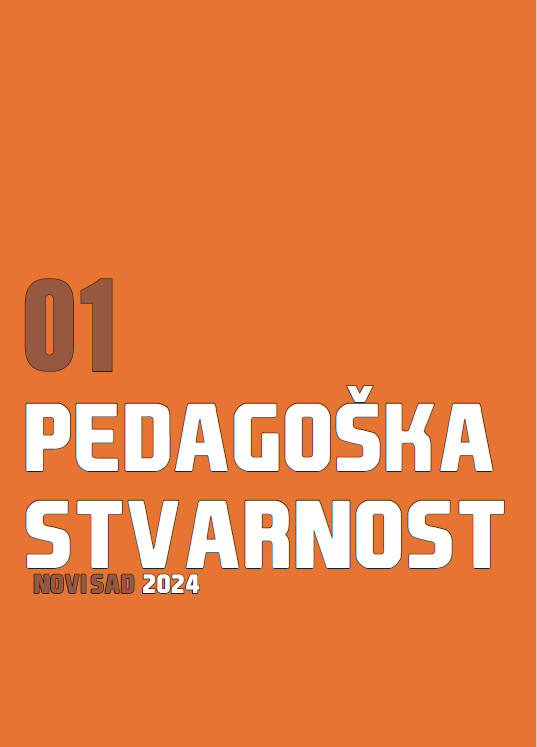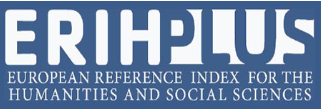Upotreba interneta od strane adolescenata sa intelektualnom ometenošću – pregled literature
Pregledni naučni rad
Apstrakt
U svijetu 59% populacije koristi internet, od čega 75% čine adolescenti. Upotreba interneta od strane adolescenata sa intelektualnom ometenošću (IO) može imati benefite, ali i određene rizike. Cilj rada bio je napraviti pregled istraživanja upotrebe interneta od strane adolescenata sa IO. Literatura prikupljena je putem pretraživača Google Scholar, Scopus, Web of Science, PubMed i ProQuest. U pregledni dio rada uključivani su radovi preglednog i istraživačkog karaktera, čiji su uzorak činili adolescenti sa IO, a koji su objavljeni u periodu od 2015. do 2023. godine. Prevalencija upotrebe interneta od strane adolescenata sa IO neujednačena je u različitim dijelovima svijeta. Pregled literature pokazao je da umjereno korišćenje interneta uz nadzor roditelja/staratelja može pozitivno uticati na razvoj kognitivnih i adaptivnih vještina. Benefiti u ovim domenima uključuju bolji školski uspjeh i veći nivo socijalizacije sa vršnjacima. Upotreba interneta bez nadzora sa sobom nosi rizike za nastanak negativnih posljedica koje uključuju sajber nasilje i internet zavisnost. Takođe se zapaža da je neophodno izvršiti prilagođavanje uređaja kojima se pristupa internetu kako bi bili funkcionalniji za adolescente sa IO. Pravilna upotreba interneta može imati brojne benefite za adolescente sa IO ukoliko se koristi umjereno i uz nadzor roditelja ili staratelja, i ukoliko im izvrši adaptiranje uređaja i softvera. Važno je sprovoditi organizovanu edukaciju roditelja i staratelja adolescenata o pravilnoj i umjerenoj upotrebi interneta u periodu adolescencije.
Reference
Alfredsson Agren, K. A., Kjellberg, A., & Hemmingsson, H. (2019). Digital Participation? Internet use among adolescents with and without intellectual disabilities: A comparative study. Sage Journals, 22(12). https://doi.org/10.1177/1461444819888398
Alfredsson Agren, K. (2020). Internet use and digital participation in everyday life. Sweden: Linkoping University.
Alfredsson Agren, K., Kjellberg, A., & Hemmingsson, H. (2020a). Internet opportunities and risks for adolescents with intellectual disabilities: A comparative study of parents’ perceptions. Scandinavian Journal of Occupational Therapy, 27(8), 601–613. https://doi.org/10.1080/11038128.2020.1770330
Anrijs, S., Drooghmans, N., Neerinckx, H., Nijs, D., Marien, I., De Marez, L., & Ponnet, K. (2022). Examining differences in internet use aspects among people with intellectual disabilities in Flanders. Telematics and Informatics, 69. https://doi.org/10.1016/j.tele.2022.101784
Arun, P., & Jain, S. (2022). Use of smart phone among students with intellectual and developmental disability. Journal of Psychosocial Rehabilitation and Mental Health, 9(4), 447–452. https://doi.org/10.1007/s40737-022-00279-3
Babb, S., McNaughton, D., Light, J., et al. (2021). “Two Friends Spending Time Together”: the impact of video visual scene displays on peer social interaction for adolescents with autism spectrum disorder. Language, Speech, and Hearing Services in Schools 52, 1095–1108. https://pubs.asha.org/doi/abs/10.1044/2021_LSHSS-21-00016
Backes, E. P., & Bonnie, R. J. (2019). The Promise of Adolescence: Realizing Opportunity for All Youth. Washington (DC): National Academies Press (US). https://www.ncbi.nlm.nih.gov/books/NBK207536/pdf/Bookshelf_NBK207536.pdf
Begara Iglesias, O., Gomez Sanchez, L. E., & Angeles Alcedo Rodriguez, M. (2019). Do young people with Asperger syndrome or intellectual disability use social media and are they cyberbullied or cyberbullies in the same way as their peers? Psicothema, 31(1), 30–37. http://doi.org/10.7334/psicothema2018.243
Björquist, E., & Tryggvason, N. (2023). When you are not here, i cannot do what i want on the tablet - The use of ICT to promote social participation of young people with intellectual disabilities. J Intellect Disabil., 27(2), 466-482. https://pubmed.ncbi.nlm.nih.gov/35475406/
Borgstorm, A, Daneback, K., & Molin, M. (2019). Young people with intellectual disabilities and social media: A literature review and thematic analysis. Scandinavian Journal of Disability Research, 21(1), 129–140. http://dx.doi.org/10.16993/sjdr.549
Buchholz, M., Ferm, U., Holmgren, K. (2018). “That is how I speak nowadays” - experiences of remote communication among persons with communicative and cognitive disabilities. Disability and Rehabilitation 40, 1468–1479. https://pubmed.ncbi.nlm.nih.gov/28325110/
Bouck, E. C., Long, H., & Jakubow, L. (2023). Using technology to enhance special education. Baken, J. P., & Obiakor, F. E. (Eds.) Using technology to enhance special education (Advances in special education), 37. Emeral Publishing Limited, Leeds, pp. 51–70. https://doi.org/10.1108/S0270-401320230000037004
Buijs, P. C., Boot, E., Shugar, A., Fung, W. L. A., & Bassett, A. S. (2017). Internet safety issues for adolescents and adults with intellectual disabilities. Journal of Applied Research in Intellectual Disabilities, 30(2), 416–418. https://doi.org/10.1111/jar.12250
Caton, S., & Chapman, M. (2016). The use of social media and people with intellectual disability: A systematic review and thematic analysis. Journal of Intellectual and Developmental Disability, 41(2), 125–139. http://dx.doi.org/10.3109/13668250.2016.1153052
Caton, S., Hatton, C., Gilloly, A., Oloidi, E., Clarke, L., Bradwshaw, J., … & Hastings, R. P. (2022). Online social connections and Internet use among people with intellectual disabilities in the United Kingdom during the COVID-19 pandemic. New Media & Society. https://doi.org/10.1177/14614448221093762
Chadwick, D. D., Quinn, S., & Fullwood, C. (2017). Perceptions of the risks and benefits of Internet access and use by people with intellectual disabilities. British Journal of Learning Disabilities, 45(1), 21–31. https://doi.org/10.1111/bld.12170
Chadwick, D. (2019). Online risk for people with intellectual disabilities. Tizard Learning Disability Review, 24(4), 180–187. https://doi.org/10.1108/TLDR-03-2019-0008
Chao, Ch-M., Kao, K-Y., & Yu, T-K. (2020). Reactions to Problematic Internet Use Among Adolescents: Inappropriate Physical and Mental Health Perspectives. ec. Health Psychology, Volume 11 – 2020. https://doi.org/10.3389/fpsyg.2020.01782
Chiner, E., Gomez-Puerta, M., & Cardona-Molto, M. (2017a). Internet and people with intellectual disability: an approach to caregivers’ concerns, prevention strategies and training needs. Journal of New Approaches in Educational Research (NAER Journal), 6(2), 153–158. http://dx.doi.org/10.7821/naer.2017.7.243
Chiner, E., Gomez‐Puerta, M., & Cardona‐Molto, M. C. (2017b). Internet use, risks and online behaviour: The view of internet users with intellectual disabilities and their caregivers. British Journal of Learning Disabilities, 45(3), 190–197. https://doi.org/10.1111/bld.12192
Chiner, E., Gomez-Puerta, M., & Mengual-Andres, S. (2019). Opportunities and hazards of the internet for students with intellectual diabilites: The views of pre-service and in-service teachers. International Journal of Disability. Development and Education, 68(4), 583– 553. https://doi.org/10.1080/1034912X.2019.1696950
Dahl, R. E., Allen, N. B., Wilbrecht, L., & Suleiman, A. B. (2018). Importance of investing in adolescence from a developmental science perspective. Nature, 554 (7693), 441−450. https://ideas.repec.org/a/nat/nature/v554y2018i7693d10.1038_nature25770.html
Damianidou, D., Arthur-Kelly, M., Lyons, G., & Wehmeyer, M. L. (2019). Technology use to support employment-related outcomes for people with intellectual and developmental disability: an updated meta-analysis. International Journal of Developmental Disabilities, 65(4), 220–230. https://doi.org/10.1080%2F20473869.2018.1439819
De Groot, R., Kaal, H., & Stol, W. (2022). The online lives of adolescents with mild or borderline intellectual disabilities in the Netherlands: Care staff knowledge and perceptions. Journal of Intellectual & Developmental Disability, 47(2), 329–338. https://doi.org/10.3109/13668250.2021.2004635
Delgado, P., Fajardo, I., Lucas, B., & Ferrer, A. (2023). Young adults with intellectual disability, their relatives, and the Internet: Perceptions and use during COVID-19 confinement in Spain. Behaviour and Information Technology. https://doi.org/10.1080/0144929X.2023.2274882
Glencross, S., Mason, J., Katsikitis, M., & Greenwood, K. M. (2021). Internet use by people with intellectual disability: Exploring digital inequality – a sytematic review. Cyberpsychology, Behavior, and Social Networking, 24(8), 503–520. https://doi.org/10.1089/cyber.2020.0499
Glumbić, N., Brojčin, B., Žunić-Pavlović, V., & Đorđević, M. (2020). Problematic mobile phone use among adolescents with mild intellectual disability. Psihologija, 53(4), 359–376. https://doi.org/10.2298/PSI190729014G
Jenaro, C., Flores, N., Cruz, M., Perez, M. C., Vega, V., & Torres, V. A. (2018). Internet and cell phone usage patterns among young adults with intellectual disabilities. Journal of Applied Research in Intellectual Disabilities, 31(2), 259–272. https://doi.org/10.1111/jar.12388
Kamran, M., Malik, M., Waseem Iqbal, M., Anwar, M., Muhammad, A., & Ahmad, S. (2022). Web simplification prototype for cognitive disabled users. Human Behavior and Emerging Technologies, 22. https://doi.org/10.1155/2022/5817410
Kostić Opsenica, J., & Pantić, T. (2017). Internet and mental health of adolescents. Zbornik radova Filozofskog fakulteta u Prištini, iss. 47-3, 197-216. https://scindeks.ceon.rs/article.aspx?artid=0354-32931703197O
Kuzmanović, D., Pavlović, Z., Popadić, D., Milošević, T. (2019). Korišćenje interneta i digitalne tehnologije kod dece i mladih u Srbiji Rezultati istraživanja Deca Evrope na internetu. Beograd: Institut za psihologiju Filozofskog fakulteta u Beogradu. https://www.unicef.org/serbia/media/12511/file/koriscenje_interneta_i
_digitalne_tehnologije_kod_dece_i_mladih_u_Srbiji.pdf
Kwan, C., Gitimoghaddam, M., & Collet, J. P. (2020). Effects of social isolation and loneliness in children with neurodevelopmental disabilities: A scoping review. Brain Sciences, 10(11). https://doi.org/10.3390/brainsci10110786
Lussier-Desrochers, D., Normand, C. L., Romero-Torres, A., Lachapelle, Y., Godin-Tremblay, V., Dupont, M.E., Roux, J., Pepin-Beauchesne, L., Bilodeau, P. (2017). Bridging the digital divide for people with intellectual disability. Cyberpsychology: Journal of Psychosocial Research on Cyberspace, 11(1). https://doi.org/10.5817/CP2017-1-1
Milićević, M. (2021). Neke karakteristike sajber vršnjačkog nasilja i sajber viktimizacije u populaciji osoba sa ometenošću-pregled istraživanja. Zbornik Instituta za kriminološka i sociološka istraživanja, 40(2–3), 41–57. https://doi.org/10.47152/ziksi20212303
Molin, M., Sorbring, E., & Lofgren-Martenson, L. (2017). New Em@ncipatory landscapes? Young people with intellectual disabilities, Internet use and identification processes. Advances in Social Work, 2(18), 645–662. https://doi.org/10.18060/21428
Mustaf, N. (2020). Impact of the 2019–20 Corona virus pandemic on education. International Journal of Health Preferences Research. https://doi.10.13140/RG.2.2.27946.98245
Nelson, E. E., Jarcho, J. M., & Guyer, A. E. (2016). Social re-orientation and brain development: An expanded and updated view. Developmental Cognitive Neuroscience, 17, 118−127. http://dx.doi.org/10.1016/j.dcn.2015.12.008
Parezanović, M. (2021). Problematična upotreba interneta kod osoba sa intelektualnom ometenošću. Master rad. Univerzitet u Beogradu, Fakultet za specijalnu edukaciju i rehabilitaciju.
Plichta, P. (2015). Prevalence of cyberbullying and other forms of online aggression among Polish students with mild intellectual disability. E–methodology, (2), 112–127.
Raghavendra, P., Hutchinson, C., Grace, E., Wood, D., & Newman, L. (2018). “I like talking to people on the computer”: Outcomes of a home-based intervention to develop social media skills in youth with disabilities living in rural communities. Research in Developmental Disabilities, 76, 110–123. https://doi.org/10.1016/j.ridd.2018.02.012
Ramsten, C., Martin, L., Dag, M., & Marmstal Hammar, L. (2019). A balance of social inclusion and risks: Staff perceptions of information and communication technology in the daily life of young adults with mild to moderate intellectual disability in a social care context. Journal of Policy and Practice in Intellectual Disabilities, 16(3), 171–179. https://doi.org/10.1111/jppi.12278
Restrepo, A., Scheininger, T., Clucas, J., Alexander, L., Salum, G. A., Georgiades, K., Paksarian, D., Merikangas, K. R., & Milham, M. P. (2020). Problematic Internet use in children and adolescents: associations with psychiatric disorders and impairment. BMC Psychiatry, 20(252). https://doi.org/10.1186/s12888-020-02640-x
Sallafranque-St-Louis, F., & Normand, C. L. (2017). From solitude to solicitation: How people with intellectual disability or autism spectrum disorder use the internet. Cyberpsychology: Journal of Psychosocial Research on Cyberspace, 11(1). https://doi.org/10.5817/CP2017-1-7
Sawyer, S. M., Azzopardi, P. S., Wickremarathne, D., & Patton, G. C. (2018). The age of adolescence. The Lancet Child & Adolescent Health, 2(3), 223–228. https://doi.org/10.1016/s2352-4642(18)30022-1
Shree, A., & Shukla, P. C. (2016). Intellectual disability: Definition, classification, causes and characteristics. Learning Community: An International Journal of Educational and Social Development, 7(1). https://doi.org/10.5958/2231-458X.2016.00002.6
Singh, S., Datta, M., Gupta, P., Batra, S. (2022). Predictors of ‘problematic internet use’ among adolescents and adults amid the pandemic in India. Clinical Epidemiology and Global Health, Volume 15, 101036. https://doi.org/10.1016/j.cegh.2022.101036.
Tang, A. C. Y. (2022). Problem gaming in adolescents with intellectual disability: Are they also influenced by problem gaming as their normal counterparts? Hong Kong Journal of Mental Health, 48(1), 42–47.
Tsatsou, P. (2021). Is digital inclusion fighting disability stigma? Opportunities, barriers, and recommendations. Disability & Society, 36(5), 702–729. https://doi.org/10.1080/09687599.2020.1749563
Volkova, I. P., Koroleva, N. N., Bogdanovskaya, I. M., Mashkova, A. V. (2019). Problematic Internet usage by adolescents with disabilities. The Education and Science Journal, 21(9), 98–121. https://doi.org/10.17853/1994-5639-2019-9-98-121
Zebracki, K. (2019). The good, the bad, and social media in adolescents with disability. Developmental Medicine & Child Neurology, 61(8), 853–857. https://doi.org/10.1111/dmcn.14272








